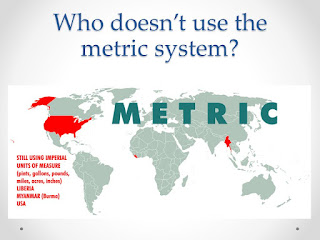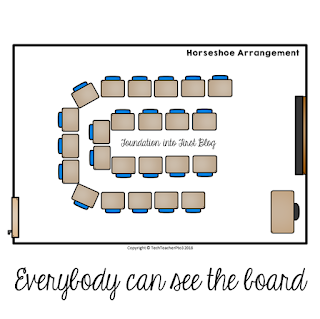Like most Australians, we feel we are part of the global community when we talk to others online. We often need to explain our slang terms (...and we have a lot!) and we’re often perplexed by Americanisms we see online but are too scared to ask ‘What are you talking about?’. So this post goes out to my American friends, in the hopes of educating you on our differences and letting you know that we have #noidea what you're talking about a lot of the time! [Edit] These are my opinions and are not representative of every Australian in the country. They are purely my observations based on where I live (Qld, Australia) and my conversations with Americans online. I'm aware there are some differences in some words throughout both our countries. The point of this article is to highlight some of our interesting differences in word meanings.
‘Cream and sugar’
When I visited America in the 1990s I was asked this and thought cream was a slang word for milk (full cream or half cream). Turns out you really pour cream into your coffee!
‘Cotton candy’ we call it fairy floss in Australia and we don’t tend to say ‘candy’ but ‘lollies’ when we refer to sweets (although I feel that we are starting to shift towards the term candy slowly over the years, we're not there yet).
Lots of your brand name sweets we have never heard of such as: Jolly Ranchers, Milk Duds, Candy Corns (I had to ask an American what on earth these things were I kept seeing in teaching products from America at Halloween), Twinkies, S’mores, Butterfinger, Junior Mints and Fluff. We have no real idea what these are.
We do, however, get M&Ms, Reeces (hard to find), Skittles and Pop Tarts. Plus all the American fast food outlets we have such as Subway, McDonalds, Wendys (although it only really sells ice-cream) and Burger King (we call it Hungry Jacks). Thank you America!
Peanut butter and jelly. No. Just no. We call jelly 'jam' and jelly 'jelly'. Whereas Americans call jam 'jelly' and jelly 'jello'. Go figure. [Edit] Here in Australia we call jelly (no fruit in it) jelly and we also call jelly (with fruit pieces) jelly with fruit. We never say jello.
SCHOOL
As I’m a teachers, I have to cover this. I’ve discussed some of the basic schooling differences in a previous post here, however there are some other differences I’ve discovered through my chats with American teachers.
Math vs Maths. Center vs Centre, Color vs Colour, behavior vs behaviour.. the list goes on. Check out my download on spelling variations if you or your students are interested. I find I use a lot of American products in the classroom so have these charts on a wall to educate students.
Seasons. You REALLY seem to celebrate every event in your classrooms Americans! Valentine’s Day, Ground Hog Day, Thanksgiving (which we don’t really understand) and every holiday in between. In Aussie classrooms we have so much content to cover we just don’t have the time. Yep we sound very boring. I know aussie teachers would love to incorporate seasonal activities into our classrooms but we are often not allowed to venture into ‘non curriculum based’ activities due to time constraints. We do Christmas, Easter and Australia Day but a lot of the other celebrations we have to pass by in the classroom sadly. By the way, where do you find the time American teachers? oh and don't forget, our seasons are reversed. Christmas on the beach anybody?
We don’t have 'recess' we have 'break' time and we don’t have 'hall passes' because we often don’t have halls! Here in Queensland, we have classrooms that open into the playground directly. We don't have 'cafeterias' we have 'tuckshops' where students can get their food (tucker) from but it's more like a window in a wall than a sit down eatery. Students mostly bring their lunch in boxes every day.
Bell ringers? Say what? Nope we haven’t heard of those either. From my chats with American teachers ‘bell ringers’ are what we would perhaps call 'warm ups' or 'morning work', but again... we are time poor so often don’t have such luxuries #thanksacara!
We have school budgets and each year level has a set amount to spend on extras. We have furniture all provided and rarely need to kit out an entire classroom as you seem to have to do in America! Why is this? You're one of the richest countries in the world! Aussie teachers still spend a lot of their own money on extras but we can claim some of it back at tax time.
Uniforms. We use them in ALL school, private or public. Children never get to wear what they want to school here (much to my own children's annoyance).
EVERYDAY NAMES FOR THINGS
There are so many differences it can be rather funny. Here are the American terms with their aussie counterparts:
Car trunk = boot
Car hood = bonnet
Rooted = broken/rubbish (not be be confused with 'root' which does mean the end of a plant but also has a ruder meaning in Australia!)
Bathers = togs
Barbie = doll/BBQ
Bathroom = toilet (we say 'where is your toilet?' rather than the US 'where is your bathroom?')
Cootie Catchers = Fortune Tellers (cooties are snot or germs and we don't want to catch those!)
Tea = cup of tea or you can have tea (dinner) in the evening
Flip flops = thongs (not the underwear!)
Slacks = pants (Brits say pants to mean undies though - how confusing for us all!)
Underwear = undies
Sidewalk = footpath
Football (American) = footy (Rugby League or Aussie Rules)
Diaper = nappy
May 7th vs 7th May (number comes first, then month, then year.. think about it.. it makes more sense right?)
Imperial (pounds and ounces) vs Metric (kilos)
Kilometers vs kilometres also had to throw that in there!
Fahrenheit vs Celsius
OTHER DIFFERENCES
- We drive on the other side of the road.
- We have two buttons in our toilets to flush and not nearly as much water as you do in American toilets (water conservation is big here).
- We rarely use a dryer for clothes (we just hang them outside).
- Most of us never see snow.
- We eat smaller food portions typically and a lot less sugar (giving candy out in the classroom is a definite no no!).
- We use an electric kettle to boil water for tea (something I assumed the whole world did actually!).
- Smoking is banned inside everywhere in Australia.
- We do also have excellent gun laws here as well and it’s a long thorough process to obtain a gun. Most people have never seen a gun let alone had one in their house. One of the many reasons we don’t have major shootings in this country.
- We don't usually pay to see a doctor as we have public health care. You can go private and pay extra to see private doctors but most people use the public health system. We only pay for private health insurance if we want extra benefits but most things are covered on Medicare.
SIMILARITIES
- We all love the outdoors
- We both have a love of families
- We like a good laugh!
We're not all that different in the end.
Aussies are all over the internet though, so spare a thought for us before you launch into an online discussion about your taxes, how cold it is or how wonderful it is that it's the end of the school year (we run Jan - Dec in our school year).
Aussies are all over the internet though, so spare a thought for us before you launch into an online discussion about your taxes, how cold it is or how wonderful it is that it's the end of the school year (we run Jan - Dec in our school year).
I’m fascinated by our differences but you know America... even though we think you’re a little odd we love ya all the same!
If you can think of any others... let me know in the comments below.






















